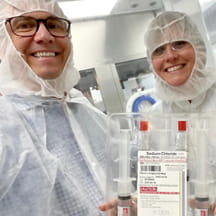Pain and opioid initiatives regularly underrepresent pediatrics, the reason Gary Walco, Ph.D., ABPP, director of Pain Medicine at Seattle Children's Hospital, is an advocate for quality pain treatment for pediatric patients. He has authored several articles on improving pain management, contributed to pain management guidelines for the state of Washington, and serves on national committees to ensure pediatrics is accounted for in opioid management policies. Here, he shares his thoughts on minimizing opioid misuse in adults and treating pain in children.
How do current and proposed opioid regulations affect children's hospitals?
We lack the data needed to answer critical questions on appropriate opioid prescribing for pediatric patients. We need to know if prescribing opioids to pediatric patients is any riskier than prescribing in general. So far data are absent, or at best, inconclusive. And the data from adults should not be applied to children. Undertreating children's pain to spare opioid use is a drastic and disturbing idea.
These policies do not account for children's development or address long-term physical implications of not receiving appropriate pain management. Limiting or preventing the use of opioids would be a challenge for children's hospitals when treating children with significant pain from chronic conditions, or after invasive medical procedures.
Are you concerned new policies are being created based on speculation versus data?
In the absence of data for pediatrics, speculation and opinion are often used to create local or national opioids policies that adversely affect children's hospitals. The need to limit opioid use for pain management in children is unsubstantiated. A critical question in policy discussions is, if you appropriately prescribe opioids for acute pain in a child, to what degree are you contributing to the risk of misuse, abuse and potentially overdose and death? The answer to this requires data, not speculation; otherwise, you've got kids who are suffering needlessly for little or no benefit.
How do we advocate for pediatric patients who require a different approach?
Educating policymakers on the consequences of undertreated or untreated pain in children is important. There is a significant risk to children with maturing nervous systems. Studies have shown that if a child's developing pain system is impacted by poorly treated pain, certain areas of the brain, as well as the injury site, become sensitized to increased and problematic pain responses in the future. Generally, the younger the child, the more the risk for future pain.


